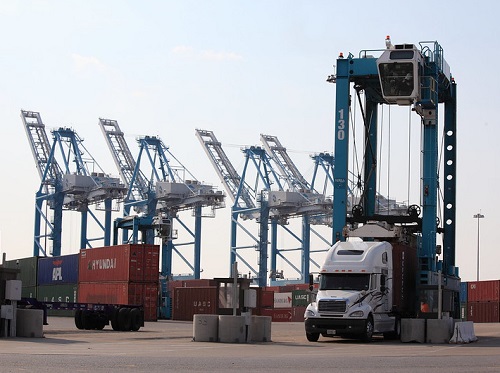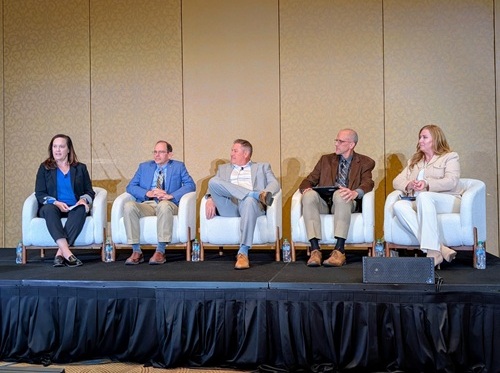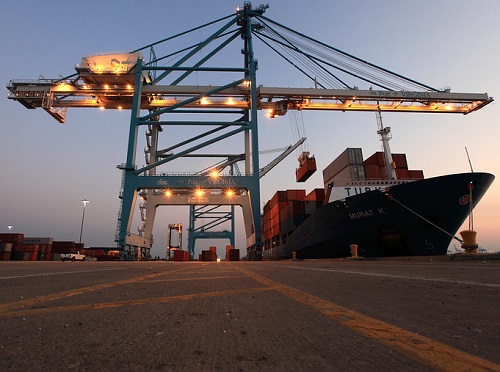The U.S. Environmental Protection Agency recently made $3 billion in grants available through its new Clean Ports Program – established by the Inflation Reduction Act enacted in July 2022 – to help fund the acquisition of zero-emission equipment, build infrastructure, and improve air quality at U.S. ports.
[Above photo by the Virginia DOT]
The EPA also noted in a statement that the Clean Ports Program will be closely tied to the Biden administration’s Justice40 Initiative, which sets the goal that 40 percent of the overall benefits of certain federal investments in climate, clean energy, and other areas flow to disadvantaged communities that are marginalized by underinvestment and overburdened by pollution.
In addition to these efforts, EPA said it strived to ensure that near-port community engagement and equity considerations are at the forefront of the program’s design, including by evaluating applications on the extent and quality of community engagement efforts.

[Editor’s note: Concurrently, the U.S. Department of Transportation’s Maritime Administration – known as MARAD – and the American Association of Port Authorities are currently conducting a survey of U.S. port authorities and marine terminal operators to identify the nation’s port cargo handling needs over the next five to ten years. Led by AAPA through a cooperative agreement with MARAD, the “Building American Production Capacity for Electric Port Equipment and Other Port Infrastructure Items” information collection effort is scheduled to be completed by spring of 2024 – with a final report issued in summer of 2024.]
The EPA said two notices of funding opportunity are being released via the Clean Ports Program for those $3 billion in grants.
First, nearly $2.8 billion is being made available via the Zero-Emission Technology Deployment Competition program to directly fund zero-emission port equipment and infrastructure to reduce mobile source emissions at U.S. ports. Eligible uses of funding include human-operated and maintained zero-emission cargo handling equipment, harbor craft and other vessels, electric charging and hydrogen fueling infrastructure, and a number of other technology investments. Applications under this competition will be evaluated under multiple tiers in order to ensure that funds are distributed across ports of different sizes and types, and to ensure funding for ports serving Tribal communities.
Second, roughly $150 million is being made available via then Climate and Air Quality Planning Competition program to fund climate and air quality planning activities at U.S. ports — including emissions inventories, strategy analysis, community engagement, and resiliency measure identification.
Funding from both of those grant programs is available to port authorities; state, regional, local, or tribal agencies that have jurisdiction over a port authority or port; air pollution control agencies; and private entities that apply in partnership with an eligible entity above, and that own, operate or use facilities, cargo-handling equipment, transportation equipment, or related technology of a port.
The funding can be used for projects at water ports (coastal and inland) as well as projects at facilities where goods are transferred between rail cars and trucks – facilities also known as “dry ports.”
Grant applications for that Clean Ports Program funding is May 28, the agency added.
 Nation
Nation
Building More Resilient Transportation Systems
November 21, 2025 Nation
Nation

